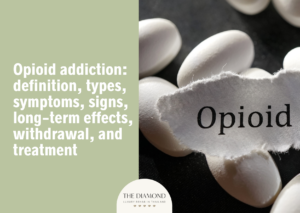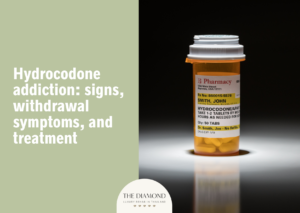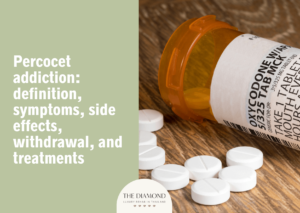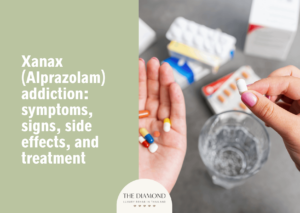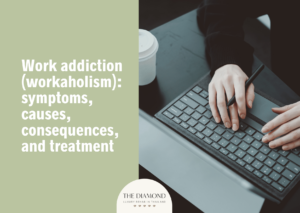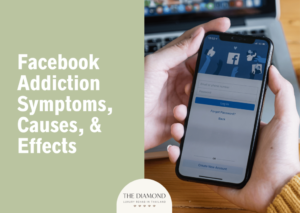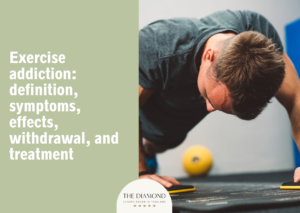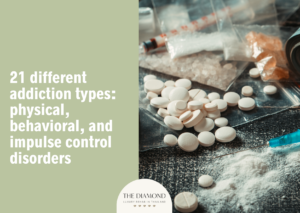Exercise addiction: definition, symptoms, effects, withdrawal, and treatment
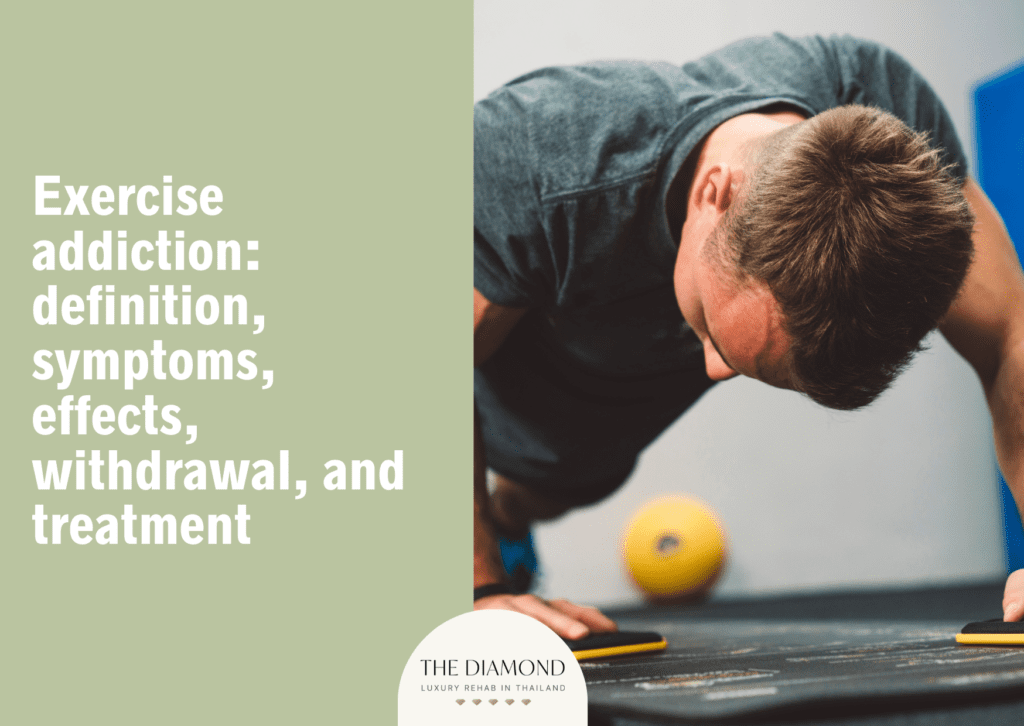
Exercise addiction is a compulsive need to engage in any form of physical activity regardless of adverse consequences like physical injury. The addiction is characterized by an inability to reduce exercise frequency or intensity and a reliance on exercise for emotional regulation and self-worth.
The symptoms of exercise addiction include irritability, anxiety or depression when missing a workout, skipping social gatherings, strained relationships with loved ones, persistent guilt over skipped workouts, excessive exercise without adequate recovery, inability to reduce workout frequency or intensity, exercising despite injury or sickness and loss of control over exercise habits.
The negative effects of exercise addiction include severe weight loss, heightened risk of injury, onset of eating disorders, chronic pain, musculoskeletal damage, emotional distress, organ damage and social and relationship problems.
The exercise withdrawal symptoms are anxiety, depression, muscle pains or aches, loss of appetite, sleep problems and headaches.Treatment options for exercise addiction include cognitive behavioral therapy (CBT), dialectical behavior therapy (DBT), rational emotive behavior therapy (REBT), support groups and nutritional counseling.
What is exercise addiction?
Exercise addiction is a behavioral disorder distinguished by excessive and uncontrolled involvement in physical activity, damaging to one’s physical health and overall welfare. Individuals struggling with the condition develop an unhealthy obsession with fitness, prioritizing workouts over rest and responsibilities.
Exercise habits frequently grow dysfunctional, pushing individuals past safe limits while disregarding the body’s natural need for recovery. Even after injuries, illness or professional warnings, people persist with rigid training schedules, worsening the damage.The estimated prevalence of exercise addiction among the exercising population ranges from 3% to 14%; however, the figure is subject to variation based on the specific population and exercise addiction measurement instrument utilized, as per a 2020 study by Trott et al., titled “Prevalence and Correlates of Exercise Addiction in the Presence vs. Absence of Indicated Eating Disorders” published in July 2020.
Why is exercising addictive?
Exercising is addictive primarily due to the influence of brain chemicals affecting the body’s reward system. During physical activity, the brain releases endorphins and dopamine, both tied to sensations of pleasure, euphoria and feel-good states.
Dopamine reinforces behaviors triggering its release, while endorphins act as natural pain relievers and mood boosters. When combined, the two result in what is frequently referred to as a “runner’s high,” a strong feeling of contentment and well-being. The desire to repeat intensifies as the rewarding cycle goes on, resulting in obsessive workout routines.
What are the symptoms of exercise addiction?
Symptoms of exercise addiction describe indications demonstrating an unhealthy relationship with physical activity. The symptoms of exercise addiction are listed below.
- Irritability, anxiety, or depression when missing a workout: When unable to exercise, individuals with exercise addiction often experience heightened irritability, anxiety, or depression. Participants in a March 2025 study by Meyer et al., titled “Stability of exercise addiction symptoms and co-occurring mental disorders – a follow-up study” expressed feelings of tension, irritability, anger, aggression, imbalance, weakness and a negative mood in connection with missed workout sessions.
- Skipping social gatherings: Individuals struggling with exercise addiction frequently avoid social events because workouts take priority over personal connections. Invitations to birthdays, dinners or casual outings are turned down to make space for exercise sessions. The avoidance eventually strains bonds and creates feelings of isolation.
- Strained relationships with loved ones: Arguments surface when exercise routines overshadow time with family. A partner is likely to interpret constant training as neglect, sparking tension at home. Clashes intensify when the addict refuses to scale back. Instead of bringing support and connection, fitness begins to create emotional distance.
- Persistent guilt over skipped workouts: Missing a workout sparks an immediate wave of guilt lingering throughout the day. A 2016 paper by Ryan E. Rhodes and Chetan D. Mistry, titled “Understanding the Reasons behind Anticipated Regret for Missing Regular Physical Activity” revealed self-conscious emotions such as personal shame accounted for 28% of guilt, while missed opportunities to gain exercise benefits dominated at 69%, showing regret reflects anticipated value beyond guilt. External pressures contributed only 3%, suggesting regret is primarily internalized.
- Excessive exercise without adequate recovery: Addicted exercisers engage in intense physical activity without allowing sufficient time for post-workout recovery. As the intensity and frequency of training increase, the body is going to need extended recovery periods to facilitate adaptation and load adjustment, a 2019 editorial by Bianco et al., titled “The “Journal of Functional Morphology and Kinesiology” Journal Club Series: Highlights on Recent Papers in Overtraining and Exercise Addiction” asserted. If recuperation time isn’t met and the amount and intensity of exercise stays the same, a condition called non-functional overreaching develops. The condition is marked by diminished performance, accompanied by neuroendocrine and psychological symptoms.
- Inability to reduce workout frequency or intensity: Attempts to cut back on exercise usually fail, even when there is a clear need for rest. The urge to maintain the same pace or push harder overrides rational decision-making. Efforts to scale down sessions bring frustration and unease. The inability to moderate shows how deeply exercise patterns have become entrenched.
- Exercising despite injury or sickness: Compulsive patterns push individuals to keep moving despite clear signs of pain. Injuries worsen because rest is avoided, and sickness drags on longer than necessary. A 2021 study by Shana Quraishi and Aksh Chahal, titled “The Role of Sports Physiotherapist in Confronting Exercise Addiction” referenced information from Morgan (1979), indicating runners persisted in exercising despite stress or other incidents, even when directed by a physician to refrain from activity. The research further stated how exercise-dependent individuals are not just susceptible to injury but additionally exhibit documented challenges with treatment adherence.
- Loss of control over exercise habits: A hallmark of exercise addiction is the inability to regulate or limit exercise behavior. Despite the desire to cut back, individuals find themselves unable to do so. Such a lack of control signifies a profound compulsion and is a defining characteristic of addiction.
What are the causes of exercise addiction?
Causes of exercise addiction describe the underlying factors and influences driving a person to develop compulsive workout habits. The causes of exercise addiction are listed below.
- Genetics: Genetic factors influence the way neurotransmitters and reward pathways function, making certain individuals more susceptible to addiction. A January 2025 report by Bulgay et al., titled “Genome-Wide Association Study of Exercise Addiction Among Elite Wrestlers” highlighted several single-nucleotide polymorphisms (SNPs) (such as PRDM10, PTPRU, HADHB, and XIRP2) potentially contributing to the onset of the disorder in professional wrestlers, offering early evidence for the genetic foundation of exercise addiction.
- Neurological factors: Differences in brain structure and function influence vulnerability to compulsive exercise. Certain individuals have heightened sensitivity in regions controlling reward and impulse regulation, increasing susceptibility to addictive patterns. According to a 2024 study by Schaub et al., titled “Brain alterations in individuals with exercise dependence: A multimodal neuroimaging investigation,” exercise dependence (ED) is associated with nuanced yet substantial modifications in brain function, predominantly affecting functional connectivity rather than overall structure. The heightened connection between the right inferior frontal gyrus (IFG) and the superior parietal lobule (SPL) indicates compromised inhibitory control or increased focus on exercise, possibly leading to obsessive behavior.
- Social influence and cultural ideals: Societal standards often portray fitness as the marker of discipline and attractiveness. Constant exposure to such ideals leads individuals to equate self-worth with physical appearance or performance. Friends, coaches or online communities tend to reinforce the mindset. Under such influence, exercise is likely to transform from a healthy habit into an unhealthy obsession.
- Perfectionistic personality traits: People with perfectionistic tendencies struggle with setting limits or accepting rest. Goals are pursued with relentless intensity, leaving little room for flexibility. Elevated levels of absolute perfectionism, perfectionistic strivings (defined by the establishment of high personal standards and objectives) and perfectionistic concerns (entailing anxieties around errors and perceived criticism) are markedly correlated with heightened compulsive exercise, a 2024 review by Bills et al., titled “Perfectionism and compulsive exercise: a systematic review and preliminary meta‑analysis” revealed.
- Escape from emotional difficulties: Exercise offers distraction from sadness, anger or unresolved trauma. Workouts serve as a temporary shield from confronting painful emotions. While the relief feels genuine, underlying issues remain unaddressed. Over time, reliance on exercise for emotional escape locks individuals into a harmful cycle.
- Previous struggles with addiction: A history of substance abuse or compulsive behavior makes a person more vulnerable to developing a new dependency. Exercise becomes the substitute, providing stimulation without drugs or alcohol. The addictive personality traits remain intact, simply shifting focus. What looks like discipline on the surface actually reflects another form of compulsion.
When does exercise become an addiction?
Exercise becomes an addiction when it transcends the boundary of healthy physical activity and evolves into a compulsive behavior individuals feel powerless to control. The shift usually happens when exercising becomes more essential than maintaining connections with others, fulfilling work obligations, and general well-being.
Signs of addiction include continuing to exercise despite injuries, experiencing withdrawal symptoms like anxiety or irritability when unable to work out, and an inability to reduce the frequency or intensity of workouts despite negative consequences.
The behavior is characterized by a loss of control, when the need to exercise takes precedence over sound judgment and results in excessive and continuous physical activity regardless of the risks involved.
Who is at risk of exercise addiction?
Endurance athletes, individuals with psychiatric profiles involving depression, attention-deficity hyperactivity disorder (ADHD) symptoms or childhood trauma and people experiencing high stress or body dissatisfaction are at risk of exercise addiction.
A 2019 paper by Di Lodovico et al., titled “Which sports are more at risk of physical exercise addiction: A systematic review” revealed the prevalence of individuals at risk for exercise addiction was highest among endurance athletes (14.2%), followed by participants in ball games (10.4%), fitness center goers (8.2%) and power disciplines (6.4%).
Furthermore, exercise addiction risk is associated with a psychiatric profile marked by elevated depression, ADHD symptoms and childhood trauma, consistent with patterns in other addictive disorders, according to a 2022 study by Colledge et al., titled “Individuals at Risk of Exercise Addiction Have Higher Scores for Depression, ADHD, and Childhood Trauma.”
High stress levels and body dissatisfaction represent another significant risk factor. As per a study by Wang et al., titled “Exercise addiction in college students: the impact of body dissatisfaction, stress, physical activity and gender” published in February 2025, college students face risks associated with exercise addiction.
Male students were more likely than female students to experience body dissatisfaction, stress, and exercise addiction. The transition in female body ideals from an emphasis on thinness to a preference for a thin and toned physique elevates the likelihood of exercise addiction among female college students.
What are the negative effects of exercise addiction?
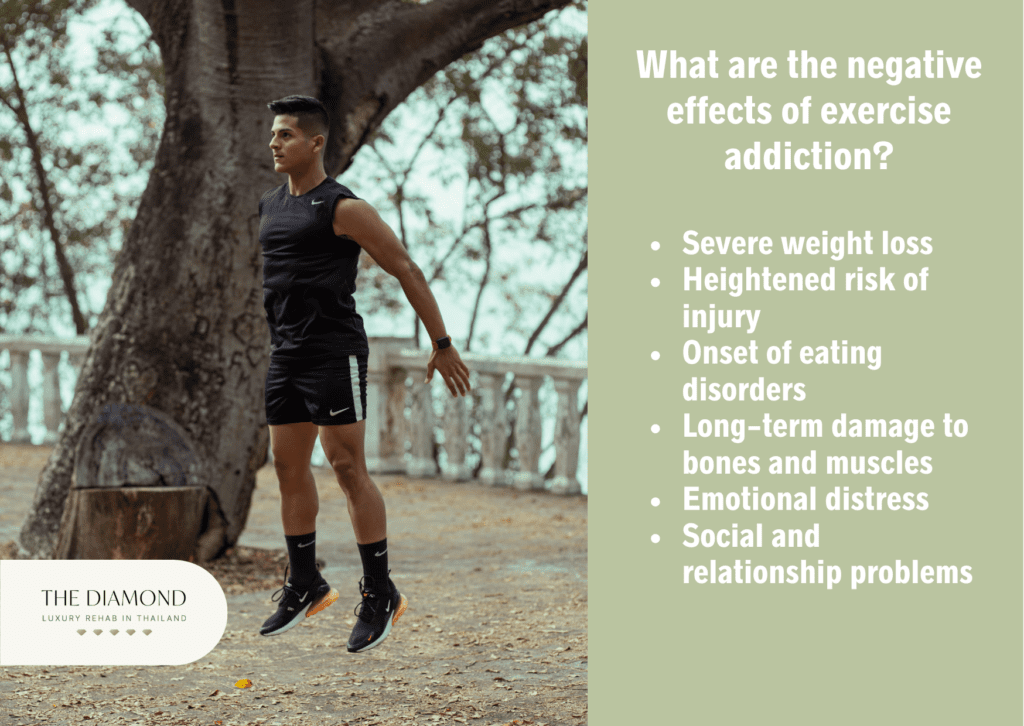
Negative effects of exercise addiction refer to the harmful consequences arising when physical activity becomes excessive and uncontrollable. The negative effects of exercise addiction are listed below.
- Severe weight loss: Exercise addiction leads to extreme weight loss because individuals burn more calories than are consumed. Malnutrition and weakened immunity result from the imbalance, making the body more susceptible to disease. A drastic decrease in body weight throws hormones off balance and leads to major health issues.
- Heightened risk of injury: People with exercise addiction face a heightened risk of injury because the body rarely gets the chance to recover properly. Continuous training keeps the muscles and joints under strain, making even minor aches harder to heal. Small injuries are ignored or dismissed, allowing them to worsen into more serious problems. Instead of building strength, the cycle of overuse gradually undermines physical resilience and long-term health.
- Onset of eating disorders: EA is frequently linked with disordered eating patterns, as control over food becomes tied to training routines. According to a 2024 study by Sahar Khoshro and Mahdieh Abbasalizad Farhangi, titled “Major Dietary Patterns, Exercise Addiction, and Eating Disorders Among a Sample of Physically Active Young Adults,” compliance with a nutritious dietary regimen correlates with elevated EA scores and concerns regarding body shape, while eating disorder (ED) symptoms are major predictors of EA.
- Chronic pain: Constant strain on muscles and joints leaves the body unable to recover fully before the next workout begins. What starts as mild soreness grows sharper and more disruptive, eventually interfering with movement, concentration and rest. Nights become restless, as the ache refuses to subside even in stillness. Instead of offering relief, physical activity becomes a cycle of discomfort shadowing every part of life.
- Musculoskeletal damage: Bones, tendons and ligaments wear down when pushed beyond reasonable limits without proper recovery. Small stress fractures or tissue strains worsen steadily, especially when training continues despite warning signs. Musculoskeletal problems were identified as a major complication of exercise addiction in a 2019 editorial by Bianco et al., titled “The “Journal of Functional Morphology and Kinesiology” Journal Club Series: Highlights on Recent Papers in Overtraining and Exercise Addiction.” Chronic discomfort and overuse injuries, such as stress fractures and tendinitis, are the results of overtraining.
- Emotional distress: The psychological dependence on exercise for emotional regulation creates a cycle of negative feelings. A study by Lichtenstein et al., published in 2018 called “Exercise addiction is associated with emotional distress in injured and noninjured regular exercisers” revealed recreational exercisers at high risk for exercise addiction reported elevated emotional stress and depressive symptoms, with the association worsening when musculoskeletal injuries were present.
- Organ damage: EA does not just wear down muscles but places relentless pressure on vital organs as well. The heart is forced into a state of constant overexertion, while kidneys and liver endure the burden of processing elevated metabolic waste. Internal systems begin to falter under the weight of ongoing stress, leading to dangerous health complications.
- Social and relationship problems: The obsessive focus on exercise leads to social isolation and strained relationships, as individuals prioritize workout routines over spending time with loved ones. Important social events and professional commitments are often neglected, causing friction and misunderstandings. The lack of balance between exercise and social life leads to isolation and diminished support networks.
Why is exercise addiction a problem?
Exercise addiction is a problem because it shifts a healthy habit into a harmful compulsion dominating daily life. People who push themselves to exercise in excessive amounts begin to suffer physical damage, outweighing the benefits of activity.
Chronic strain leads to injuries, hormonal disruption and even long-term organ complications. Emotional health is additionally undermined, as guilt and anxiety build whenever workouts are skipped or shortened. Social connections weaken once training schedules take priority over relationships, leaving isolation and conflict in place.
Work or academic responsibilities fall behind as exercise demands consume nearly all available energy. The financial burden tied to memberships and supplements adds further detriment, especially once medical expenses begin to surface.
What are the exercise withdrawal symptoms?
Exercise withdrawal symptoms refer to the physical and psychological responses emerging when a person accustomed to frequent, intense workouts is suddenly unable to continue. The most common exercise withdrawal symptoms are listed below.
- Anxiety: When regular exercise is suddenly reduced or stopped, individuals experience heightened levels of anxiety. Exercising moderately, such as walking, jogging or doing other physical activities for around 2.5 to 7.5 hours a week, is the best way to lessen anxiety. Not getting enough exercise (like sitting around all the time) or too much (like working out for more than 10 hours a week) potentially make anxiety worse, a 2019 study by Kim et al., titled “The Association between Physical Activity and Anxiety Symptoms for General Adult Populations: An Analysis of the Dose-Response Relationship” noted.
- Depression: Exercise withdrawal results in depressive symptoms as the body no longer receives the regular endorphin and dopamine boosts contributing to mood elevation. Out of the 31 people who took part in a 2023 study by Tschopp et al., called “Exercise Addiction and Major Depressive Disorder – Clinical Diagnoses and Longitudinal Course,” 16 (52%) matched the criteria in the Diagnostic and Statistical Manual of Mental Disorders, Fifth Edition (DSM-5) for a lifetime diagnosis of major depressive disorder (MDD). This percentage is far higher than the average lifetime prevalence of MDD in the general population (usually between 15% and 30%).
- Muscle pains or aches: Sudden cessation of exercise brings muscle pain and aching as the body adjusts to reduced activity. The tension stems from prior exertion combined with insufficient recovery. Discomfort serves as a clear physical sign of the withdrawal process.
- Loss of appetite: Loss of appetite emerges as a withdrawal symptom when the body, once used to intense activity, struggles to adjust to sudden inactivity. Hormonal imbalances disrupt normal hunger cues, reducing the desire for food even when energy is low. Emotional distress tied to missing workouts further suppresses interest in eating.
- Sleep problems: Individuals experiencing exercise withdrawal have difficulty falling asleep or staying asleep, resulting in poor sleep quality. According to a 2023 report by Shah et al., titled “Sleep disorders and exercise: a mini-review,” professional athletes experience diminished quality and/or quantity of sleep. The problem is believed to be attributable to training procedures resulting in atypical working hours and sleep patterns, travel related to competition, and psychological stress. Athletes frequently show inferior objective indicators of sleep quality and report excessive daytime sleepiness (EDS). Therefore, exercise has differing effects on sleep quality based on environmental circumstances.
- Headaches: Headaches appear as a withdrawal symptom when the body no longer receives the endorphin release usually triggered through intense activity. Stress builds as the nervous system adjusts, tightening muscles and restricting blood flow, intensifying the pain. Anxiety tied to the absence of workouts adds another layer of tension, worsening the condition.
What are the treatments for exercise addiction?
Treatments for exercise addiction describe programs intended to lessen obsessive exercise habits and bring mental and physical well-being back into balance. The treatments for exercise addiction are listed below.
- Cognitive behavioral therapy (CBT): CBT helps individuals with exercise addiction by identifying harmful thought patterns driving compulsive behavior. The approach teaches healthier coping strategies, replacing excessive workouts with balanced routines supporting recovery. Through challenging distorted beliefs about self-worth and fitness, CBT reduces the emotional pressure to overtrain. Consistent practice of such techniques fosters long-term change and promotes a healthier relationship with physical activity.
- Dialectical behavior therapy (DBT): DBT helps manage exercise addiction by teaching skills to regulate intense emotions that fuel compulsive training. People learn to stay in the moment and lessen urges associated with anxiety or distress by practicing mindfulness. DBT additionally strengthens tolerance for discomfort, making it easier to resist the impulse to overexercise.
- Rational emotive behavior therapy (REBT): REBT targets the unrealistic beliefs pushing people toward compulsive workouts. Instead of allowing perfectionism or distorted ideas about body image to control behavior, the approach helps expose and challenge those harmful thoughts. A 2023 study by Knapp et al., titled “Psychological well-being and exercise addiction: The treatment effects of an REBT intervention for females” described the case of three female exercisers (aged 28-35) who showed signs of exercise addiction and underwent REBT. Post-REBT, all participants reported reduced exercise compulsion and improved well-being, attributing changes to REBT’s focus on rational beliefs. They additionally noted better life balance (e.g., more time for social activities) and less guilt when missing workouts.
- Support groups: Support groups create a safe environment where individuals share struggles and successes with others facing the same condition. The chance to hear and identify with other narratives fosters a sense of community while lowering feelings of loneliness. Peer support increases motivation to stick to healthy routines and continue participating in recovery.
- Nutritional counseling: Nutritional counseling offers practical strategies for restoring balance between diet and physical activity. A nutritionist evaluates eating habits and designs plans with the goal of replenishing nutrients depleted through excessive training. Guidance from a professional encourages healthier views on food, easing the compulsive behaviors tied to addiction.
How can exercise addiction be prevented?
Exercise addiction can be prevented through awareness, balance and early support. Developing realistic fitness goals reduces the likelihood of pushing the body beyond healthy limits. Learning to take a break when fatigue or injury sets in teaches self-control and respect for physical boundaries.
Psychoeducation delivered in schools, gyms or community centers increases understanding of addictive behaviors linked to exercise and highlights warning signs before habits worsen. Structured prevention programs promote healthier training approaches and encourage individuals to prioritize both mental and physical well-being.
Strong social networks provide opportunities to connect with peers reinforcing balanced routines rather than extreme patterns. Individuals noticing early symptoms are encouraged to get help from health professionals before dependency deepens. With the help of a professional, people are better able to identify destructive tendencies and learn the importance of moderation.
Is there a relation between exercise addiction and energy drink addiction?
Yes, there is a relation between exercise addiction and energy drink addiction, as both behaviors are motivated by a fundamental need for heightened performance, elevated energy levels, and enhanced mood.
Individuals with compulsive exercise habits frequently seek ways to sustain performance and endurance, leading to reliance on stimulants. The need for constant energy creates a cycle where pushing past fatigue becomes a daily expectation. As a result, substances providing quick boosts become part of the routine.
Energy drinks are particularly appealing in such situations because they temporarily mask exhaustion and create a false sense of increased capacity. Excessive consumption increases the probability of energy drink addiction, particularly when coupled with rigorous exercise regimens. Both situations mutually reinforce detrimental habits that value performance over well-being.
Is there a relation between exercise addiction and obsessive-compulsive disorder?
Yes, there is a relation between exercise addiction and obsessive-compulsive disorder, as perfectionism and rigidity, two characteristics of obsessive-compulsive personality disorder (OCPD), showed a positive correlation with exercise addiction, indicating how compulsive tendencies are frequently the driving force behind excessive exercise, as noted in a 2023 study by Tang et al., called “The Associations between Obsessive Compulsive Personality Traits, Self-Efficacy, and Exercise Addiction.”
The report further mentioned self-efficacy, defined as the belief in one’s capacity to manage obstacles, exhibits a positive correlation with exercise addiction. This suggests elevated confidence tends to facilitate or reinforce compulsive exercise behaviors.
Both conditions involve compulsive behaviors and an overwhelming need to perform certain activities to alleviate anxiety or achieve a sense of control. Individuals with obsessive-compulsive disorder are likely to develop exercise addiction as a way to manage intrusive thoughts and reduce anxiety, finding temporary relief in the repetitive nature of physical activity.
Is exercise addiction a coping mechanism?
Yes, exercise addiction functions as a coping mechanism, since physical activity initially works as one of the healthier coping mechanisms by reducing stress, improving mood and offering a sense of structure.
Numerous people rely on workouts to manage anxiety or escape from difficult emotions, and in moderation such a reliance supports wellbeing. Trouble begins once the behaviour shifts from a balanced outlet into an excessive dependency. The drive to exercise then becomes less about health and more about avoiding distress, creating a pattern resembling other addictions.
When exercise dominates daily life, it no longer serves as relief but adds new pressures instead. Emotional regulation becomes tied to training sessions, leaving little room for alternative strategies.


